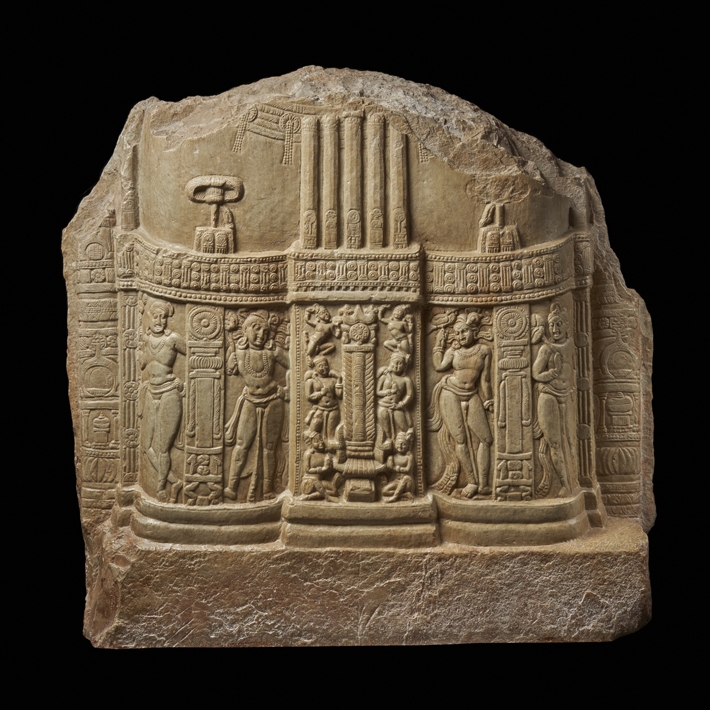72.Stūpa drum slab honoring the Buddha as a flaming pillar

- 3rd century
- Amaravati mahācaitya, Guntur district, Andhra Pradesh
- Archaeological Museum ASI, Amaravati, Guntur district, Andhra Pradesh
The flaming pillar rising from an empty throne to denote the presence of the Buddha is a unique contribution of early southern Buddhism. It is probable that the motif conflates Buddhist imagery (the empty throne) with pre-Buddhist sacrificial posts (yūpa) and Vedic fire (agnipuja) worship. While no known texts directly explain this imagery in a Buddhist setting, the concept combines two metaphors of divinity: the sacrifical post that the Buddha caused to appear, adomed with jewels and made entirely of gold, and its flame-emitting quality that, like the Buddha's body, radiates brilliance. The sutras tell us that the Buddha was upright like a golden sacrificial post, and radiated splendor.

 Previous
Previous